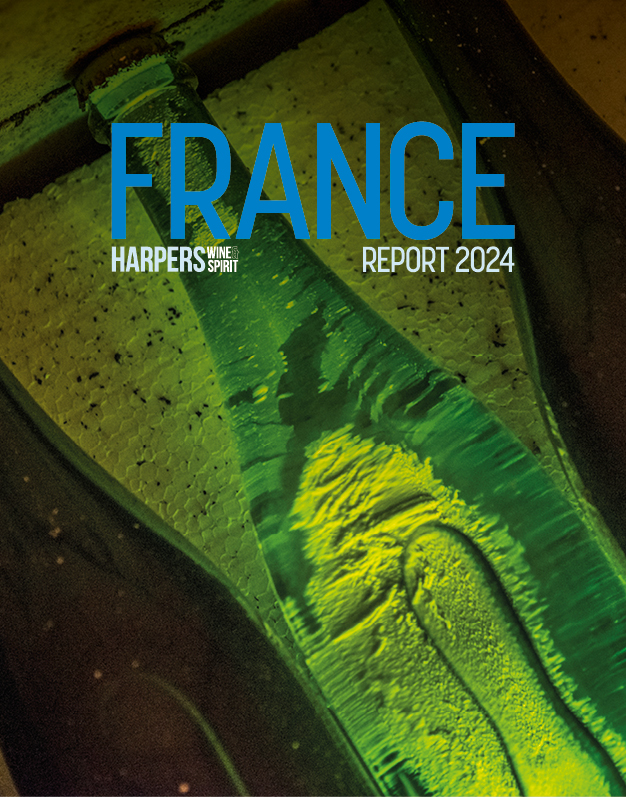Geoffrey Dean on the 2012 vintage from the Centre-Loire
Those Sauvignon Blanc drinkers that have had their fill of New Zealand examples of the varietal, should know how good the 2012 vintage was in the Centre-Loire.
Those Sauvignon Blanc drinkers that have had their fill of New Zealand examples of the varietal, should know how good the 2012 vintage was in the Centre-Loire.
No green, under-ripe Marlborough notes there, nor the corrosive Antipodean acidity that can make a second bottle hard to drink, for last year's wines from this scenic 'Heart of France', along with many others before it, exude classic balance and drinkability.
"Wines of pleasure" are what Benoît Roumet, the director of the Bureau Interprofessionnel des Vins du Centre-Loire, likes to call them. "We know the New World is producing some decent Sauvignon but we are the homeland of the grape, and we make wines that are both appealing now and can age well. Everyone is very excited by the wines made in 2012. They have lovely fruit and balance."
Sauvignon has flourished for decades in the varied terroirs of the Centre-Loire, where the grape constitutes three-quarters of the region's production from its eight appellations. Sancerre, Pouilly Fumé and Menetou-Salon are the best known of them, but much smaller entities like Quincy, Reuilly and Coteaux du Giennois are producing distinctive wines of quality. The latter, for example, has enjoyed a recent boom in exports to the UK with its full-bodied Sauvignon that shows more tropical fruit than other parts of the region.
Tiny Chateaumeillant, which grows Gamay, is the most recent appellation to have received AOC status (in 2010), but Pouilly sur Loire, where only Chasselas is produced, notably by Michel Redde, is even smaller, with only 30ha under vine. Redde has also just planted what is a unique parcel in the Centre-Loire, a 4ha block on 100% 'silex'. This flinty terroir is particularly prized by winemakers, producing longer-living and highly perfumed wines.
Other soils do, of course, produce Sauvignon that lasts well. A vertical tasting of Château de Tracy, in Pouilly Fumé, with owner Comte Henri d'Astutt d'Assay, of every vintage from 2003 to 2012 showed just how good aged Sauvignon can be. Vines planted in 1953 on kimmeridgian limestone and flinty clay yielded wines of real concentration and complexity that were long and elegant. "Even the 1996, a great vintage here, is still fabulous, although she is an old lady now," the count mused.
Remarkably, records of Château de Tracy's vineyards go back over six centuries to its mention in a manuscript of 1396 that is kept in the estate's archives. This sense of history pervades the region, for just down the road in the village of Pouilly, Pierre-Francois Masson, 33, is a seventh generation winemaker at his family's winery, Domaine Masson-Blondelet.
Not that these young Centre-Loire winemakers are rigid adherents to tradition. Masson, like so many others locally, has worked in New Zealand, and is as alert to new viticultural and vinification techniques as New World producers. The organic doctrine is also widely embraced, although many vignerons do not chase certification so that they have the option of using copper-based sprays to combat downy mildew.
Leading Sancerre producer, Henri Bourgeois, is an avowed disciple of 'la lutte raisonnée' (organic practices wherever possible). The domaine's winemaker, Jean-Christophe Bourgeois, was beaming about the 2012 vintage. "It's one of the best since 1996," he told Harpers. "On a par with 2008 and 2010. People are going to love last year's wines."
Paul-Henri Pellé, in the village of Morogues, likewise believes 2012 to be the best vintage he has made since he started seven years ago. "The whites and reds have perfect balance - it's very rare for both to have that," he said. "They have that fresh style. It's a pleasure when you open the bottle and don't think about it."
Black grapes always used to be what Sancerre specialised in, until the mid 20th century at least when Sauvignon was introduced there. Some top-quality Pinot Noir, the principal red wine of the region, was produced in 2012, notably by Gerard Boulay. Yield was so low that he managed only 15 hl/la, but the concentration and balance he has achieved is exceptional. As a result, the wine has coped easily with 50% new oak, an unusually high percentage for the region.
Like Boulay, Vincent Pinard has made some wonderful reds and whites from 2012. The latter, who considers it his best vintage since 1996, employs a rare vinification technique for Pinot Noir: semi-carbonic maceration. "We only use it for our best cuvée, the Vendanges Entières, as it's very labour intensive and therefore expensive," his son Clement told Harpers.
"It's very interesting as we remove the stems by hand apart from the top 20mm to cause intracellular fermentation. The aromas are kept inside the grape, and with 30% new oak, it's necessary to wait four or five years before drinking the wine." The message is clear though: white and red wines alike from the Centre-Loire offer the consumer plenty of options - drinkability, quality and ageability.






